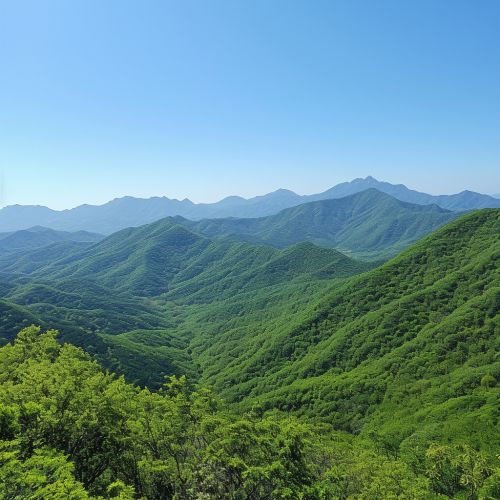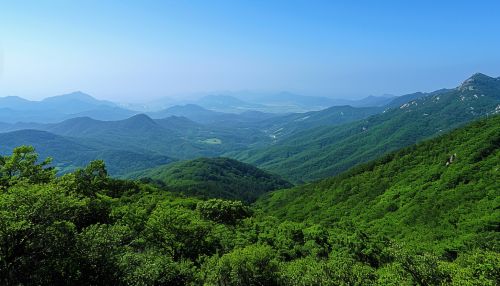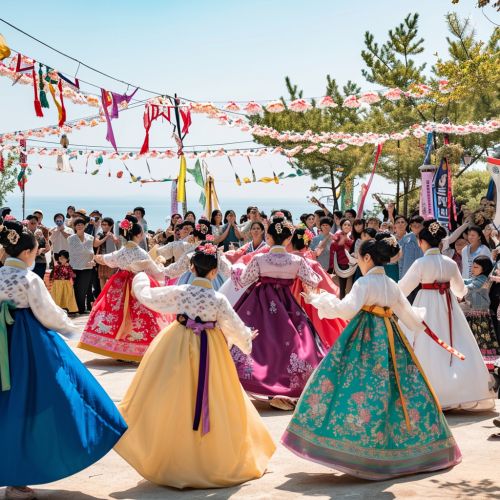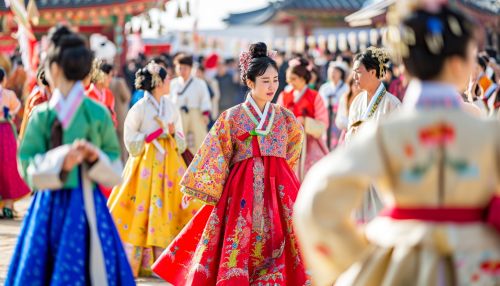Gangwon (South Korea)
Geography
Gangwon province is located in the eastern part of the Korean Peninsula and is divided into two parts by the Demilitarized Zone (DMZ). It is bordered by the provinces of Gyeonggi and North Chungcheong to the west, and North Gyeongsang to the south. To the north, it shares a border with North Korea, and to the east, it is bounded by the East Sea (also known as the Sea of Japan). The province's terrain is predominantly mountainous, with the Taebaek Mountains running along the eastern edge. The province's highest point is Seoraksan, a popular destination for hiking and outdoor activities.


History
The history of Gangwon Province is deeply intertwined with the broader history of the Korean Peninsula. During the Three Kingdoms Period, it was part of the kingdom of Goguryeo, one of the three kingdoms. After the fall of Goguryeo, the area was incorporated into the Unified Silla Kingdom. During the Goryeo Dynasty, the province was established as an administrative unit. The province's history is also marked by the division of Korea into North and South after World War II, with the province being split into two parts along the DMZ.
Administrative Divisions
Gangwon Province is divided into 7 cities (Gangneung, Donghae, Samcheok, Sokcho, Wonju, Taebaek, and Chuncheon) and 11 counties. Each city and county has its own local government, but the province as a whole is governed by the Gangwon Provincial Office.
Economy
The economy of Gangwon Province is diverse, with a mix of agriculture, industry, and services. The province is known for its production of potatoes and mushrooms, as well as its fisheries along the East Sea coast. The province also has a significant tourism industry, with visitors drawn to its natural beauty, ski resorts, and historical sites. In recent years, the province has also become a hub for the IT industry, with the development of the Chuncheon Bioindustry Foundation and the Gangneung Science Oval.
Culture
Gangwon Province is rich in cultural heritage, with a number of traditional festivals, foods, and crafts. The province is known for its Gangneung Danoje Festival, a UNESCO Intangible Cultural Heritage, as well as its traditional Hanbok crafts. The province's cuisine is characterized by its use of local ingredients, with dishes like Chodang Sundubu and Gangwon-do Potato Pancakes being popular.


Education
Gangwon Province is home to several universities and educational institutions, including Kangwon National University, Hallym University, and Gangneung-Wonju National University. The province also has a number of primary and secondary schools, as well as vocational and technical colleges.
Transportation
Transportation in Gangwon Province is facilitated by a network of roads, railways, and airports. The province is served by the Yeongdong Expressway and the Donghae Expressway, as well as the Gyeongchun Line and Yeongdong Line railways. The province's main airport is Yangyang International Airport, which offers domestic and international flights.
Sports
Gangwon Province has a strong sporting culture, with a number of professional and amateur sports teams. The province is home to the Gangwon FC football team, as well as the High1 ice hockey team. The province also hosted the 2018 Winter Olympics in Pyeongchang, further cementing its reputation as a hub for winter sports.
See Also
- Korean Demilitarized Zone
- Gyeonggi Province
- North Chungcheong Province
- North Gyeongsang Province
- Three Kingdoms of Korea
- Goguryeo
- Silla
- Goryeo Dynasty
- Gangneung Danoje Festival
- Chodang Sundubu
- Gangwon-do Potato Pancakes
- Kangwon National University
- Hallym University
- Gangneung-Wonju National University
- Yeongdong Expressway
- Donghae Expressway
- Gyeongchun Line
- Yeongdong Line
- Yangyang International Airport
- Gangwon FC
- High1
- 2018 Winter Olympics
